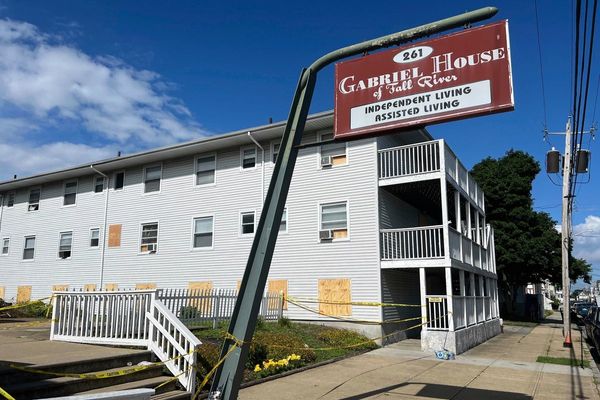
Hold on tight, because the retirement ride may be hitting some unexpected bumps. For millions of seniors across the country, critical benefits that make life more affordable, more secure, and more comfortable are suddenly at risk. With shifting legislation, rising national debt, and evolving government priorities, some long-standing perks for older adults could be reduced—or vanish altogether.
These aren’t just small changes in paperwork; they’re real benefits that directly impact everything from housing and healthcare to food and transportation. If you or someone you love relies on any of the following, now’s the time to stay informed, stay vocal, and stay ahead of what could be coming.
1. Medicare Advantage Add-Ons
Medicare Advantage plans have long been praised for offering extra perks—think dental, vision, hearing, and even gym memberships. But this year, lawmakers are taking a harder look at the rising costs and inconsistencies in these private plans. Some insurers may begin cutting back or eliminating these popular “add-ons” to balance budgets. That means seniors could soon lose access to non-core services they’ve come to rely on without warning. It’s a potential shakeup that could leave millions scrambling to fill the gaps.
2. Social Security Cost-of-Living Adjustments (COLA)
Every year, seniors look forward to a small bump in Social Security checks thanks to the Cost-of-Living Adjustment—or COLA. But due to fluctuating inflation and budget concerns, this year’s increase may be minimal or disappear altogether. If COLA is frozen or reduced, purchasing power for seniors could drop just when prices on essentials are soaring. Fixed incomes would feel even tighter, making everyday life more financially stressful. A lack of adjustment doesn’t just mean less money—it means falling behind.
3. Subsidized Housing Assistance
Programs like Section 202 and HUD subsidies help thousands of older adults stay in safe, affordable housing. But funding cuts and shifting priorities in housing policy may put these lifelines at risk. With fewer dollars available, waitlists could grow longer, or entire programs may be scaled back. Seniors living on limited income could find themselves priced out of housing they’ve called home for years. As the cost-of-living climbs, these cuts could have devastating consequences.
4. SNAP (Food Stamp) Benefits for Seniors
The Supplemental Nutrition Assistance Program (SNAP) plays a critical role in helping low-income seniors afford groceries. Unfortunately, proposals to tighten eligibility requirements and reduce overall funding are on the table. Seniors who barely qualify now may be cut off, and those receiving small benefits could see them shrink. For many, SNAP isn’t a luxury—it’s the difference between eating or skipping meals. Any reduction could turn food insecurity into a growing crisis among older adults.

5. Free Tax Preparation Services
Programs like the IRS-sponsored Tax Counseling for the Elderly (TCE) offer free help with filing taxes, especially for seniors with limited income. But this service is often on the chopping block during federal budget negotiations. If funding disappears, older adults may have to pay for tax help or risk filing incorrectly. These services don’t just save money—they also ensure eligible seniors get every deduction and credit they deserve. Losing access could lead to more mistakes and missed opportunities.
6. Public Transit Discounts
Many cities and states offer discounted or even free public transit options for seniors—but these too are under review. With rising transportation costs and shrinking transit budgets, fare breaks may soon be scaled back or eliminated. For seniors who don’t drive, these discounts can mean the difference between independence and isolation. Without them, routine trips to the grocery store or doctor could become expensive or impossible. Removing this support hits especially hard in rural and low-income communities.
7. Utility Bill Assistance Programs
Programs like LIHEAP (Low Income Home Energy Assistance Program) help seniors keep the lights and heat on during extreme weather. But this year, these safety nets are being threatened by budget limitations and shifting energy priorities. Without assistance, seniors living on the edge may face difficult decisions between heating their homes or buying medication. Energy costs are rising nationwide, and cutting support now could leave many vulnerable. These programs are small investments with massive impact.
8. Free or Discounted Lifeline Phone Services
Access to a phone isn’t just about chatting—it’s about safety, healthcare, and staying connected. Lifeline, a federal program, helps low-income seniors get discounted or free phone and internet service. However, funding cuts and policy changes could scale back eligibility or reduce the benefit altogether. This would be especially harmful to seniors living alone or managing health conditions that require frequent communication. Being disconnected in today’s world is not just inconvenient—it’s dangerous.
9. Medicaid Home and Community-Based Services
Seniors who want to age in place often rely on Medicaid’s home and community-based services for caregiving and support. Unfortunately, these services are expensive and often first in line for budget trimming. If reduced or eliminated, many seniors could be forced into nursing homes or lose essential care at home. This not only impacts quality of life—it also costs taxpayers more in the long run. Cuts here could strip away independence and comfort for thousands.
10. Senior Job Training and Placement Programs
Programs like the Senior Community Service Employment Program (SCSEP) help older adults find part-time work and re-enter the workforce. But with younger workers taking economic priority in many job initiatives, senior programs are at risk of being deprioritized. Job placement and training for seniors are vital for those who need extra income or want to stay active. Losing these programs means fewer opportunities and more isolation for seniors trying to stay engaged. Economic insecurity can hit harder later in life, and every job opportunity matters.
Stay Informed and Speak Up
When benefits disappear, the impact isn’t theoretical—it’s personal. Seniors across the country rely on these programs not for luxury, but for survival, independence, and dignity. That’s why it’s crucial to stay alert, ask questions, and raise voices when change threatens the systems older Americans depend on. Policymakers respond to pressure, and awareness is the first step toward protection.
Now’s the time to share your thoughts: which benefit would hurt the most if it disappeared—and what can we do about it?
Read More
7 Times Social Security Payments Suddenly Stopped Without Warning
10 Practices in Elder Care That Would Be Criminal in Other Contexts
The post 10 Senior Benefits That Could Disappear This Year appeared first on Everybody Loves Your Money.







